Last Updated on March 16, 2024
Relay is a electro-mechanical switch used to control high power application through low power signal electronic circuits, for an example a simple timer circuit working under 5V DC bias can not control high voltage light bulb, by introducing Relay component we can easily control light bulb.
Typical Relay
Typical Relay contains Electromagnetic coil, N/O contact, N/C contact and Common contact, electromagnetic coil accepts low voltage DC bias and becomes electromagnet to attract the common terminal lever and interchanges the connection between N/C, N/O contacts.
Types of Relay
Different types of Electrical Relay Switches are available in market
- SPST – Single Pole Single Throw
- DPST – Double Pole Single Throw
- SPDT – Single Pole Double Throw
- DPDT – Double Pole Double Throw
but most frequently used Relays are SPDT Relay and DPDT Relay both are acts as Electromechanical switch.
SPDT Relay
Single Pole Double Throw (SPDT) Relay contains two coil terminals and common terminal, then two switching terminals N/O (Normally Open), N/C (Normally Close)
If there is not enough DC supply in coil terminals then Relay represents idle condition that is common terminal connected in N/C terminal. When the coil gets required DC supply then coil gets Magnetically Energized and this magnetic flux force attracts common terminal lever which is made of iron and makes the connection to N/O terminal, now the N/C becomes open.
DPDT Relay
Double Pole Double Throw (DPDT) Relay contains two coil terminals, two separate common terminals C1, C2 and two Normally Open (N/O1, N/O2), two Normally Close (N/C1, N/C2) terminals, this Relay makes two different connection and control with one control signal to the coil.
If there is no bias at coil then Relay stays in idle condition that is common terminals are connected with N/C terminals, when DC bias arrives to coil then it gets magnetically energized and attract common terminal levers and makes connection between common terminals and N/O terminals, now the N/C terminals becomes open and those terminals are works with their pairs.
How the Relay Works?
Here simple relay circuit given for an example, when there is no DC supply the bulb connected at N/O terminal remains off and When DC supply given to the Relay coil it get magnetically energized and attracts the common terminal lever to N/O terminal and the bulb circuit completes this step makes bulb glow.

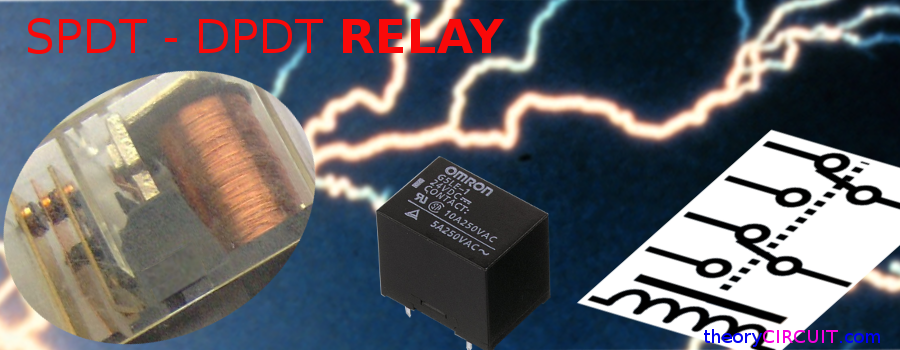
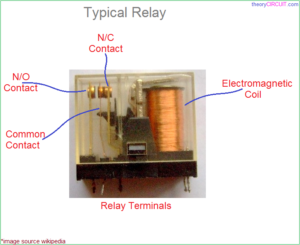
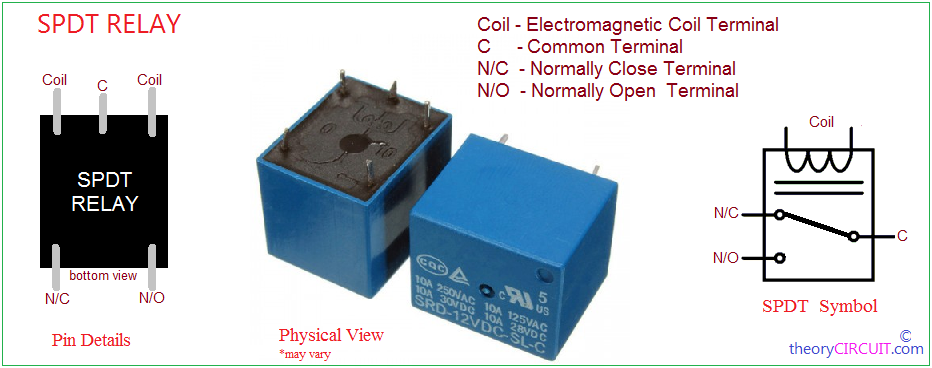
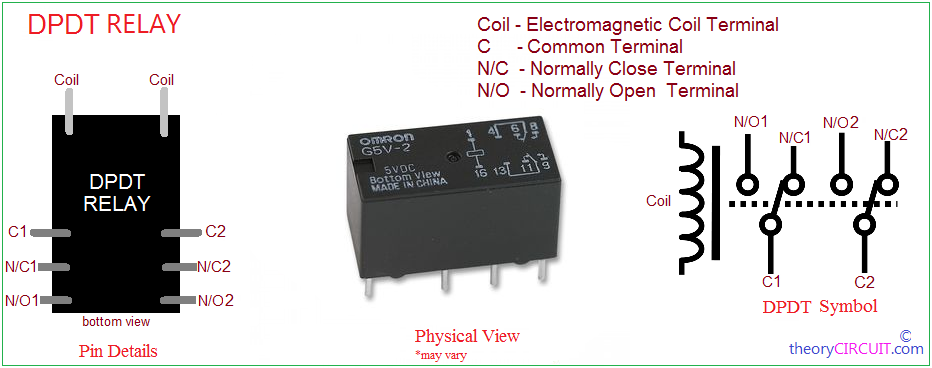
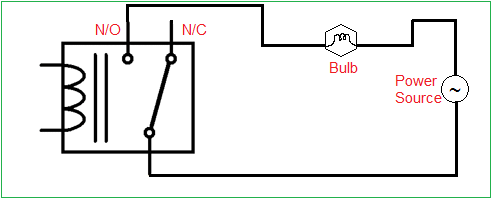
can you please help me with wiring single low and 2 highs where the low stays on ?? all are 2 wire thanks
I can’t get your Question. Refer Article carefully hope you will get Answer.